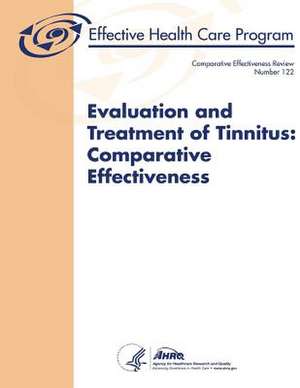Evaluation and Treatment of Tinnitus
Autor U. S. Department of Heal Human Services, Agency for Healthcare Resea And Qualityen Limba Engleză Paperback
Preț: 165.10 lei
Preț vechi: 173.80 lei
-5% Nou
Puncte Express: 248
Preț estimativ în valută:
31.59€ • 33.07$ • 26.14£
31.59€ • 33.07$ • 26.14£
Carte indisponibilă temporar
Doresc să fiu notificat când acest titlu va fi disponibil:
Se trimite...
Preluare comenzi: 021 569.72.76
Specificații
ISBN-13: 9781492803577
ISBN-10: 149280357X
Pagini: 298
Dimensiuni: 216 x 280 x 16 mm
Greutate: 0.69 kg
Editura: CREATESPACE
ISBN-10: 149280357X
Pagini: 298
Dimensiuni: 216 x 280 x 16 mm
Greutate: 0.69 kg
Editura: CREATESPACE
